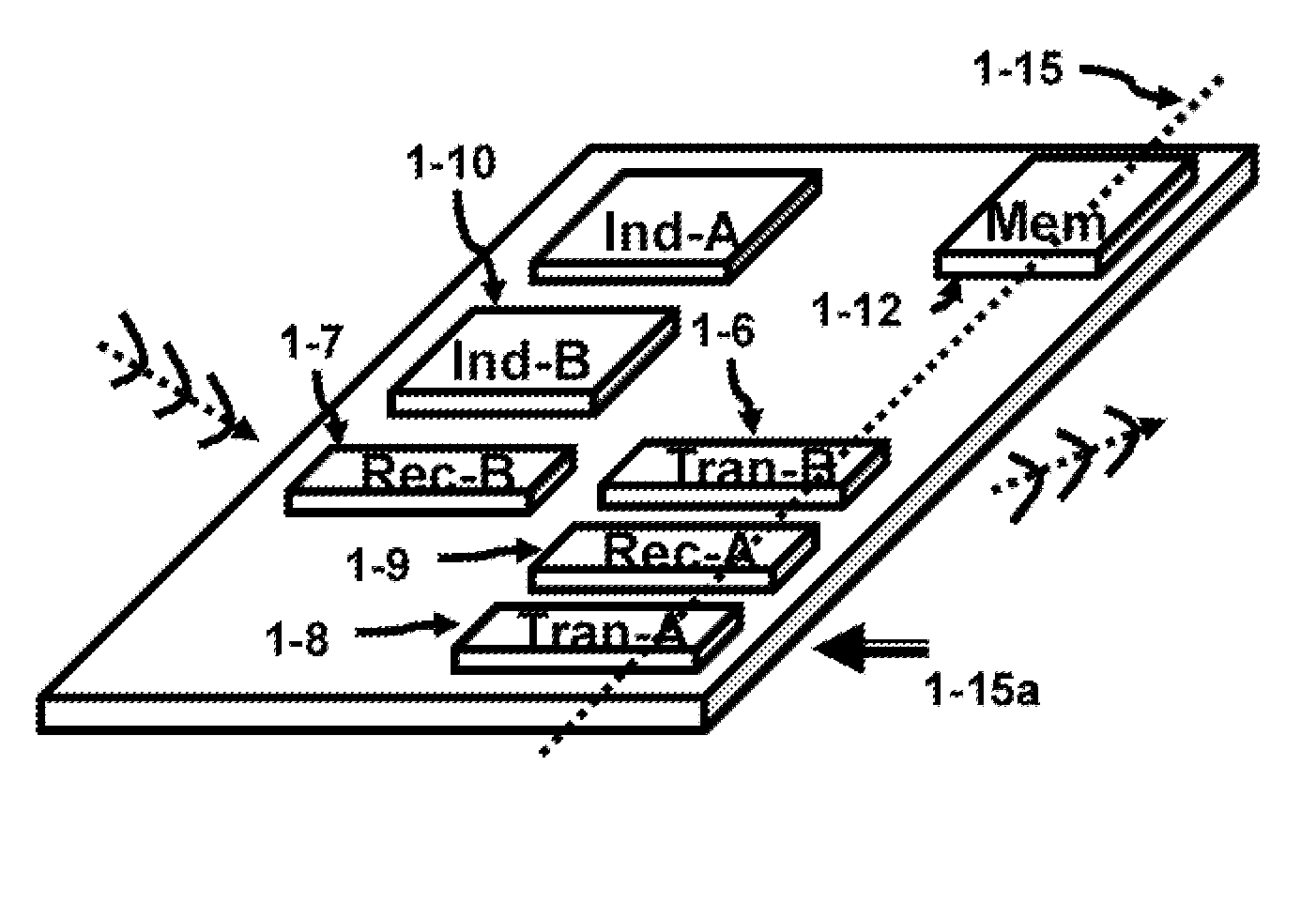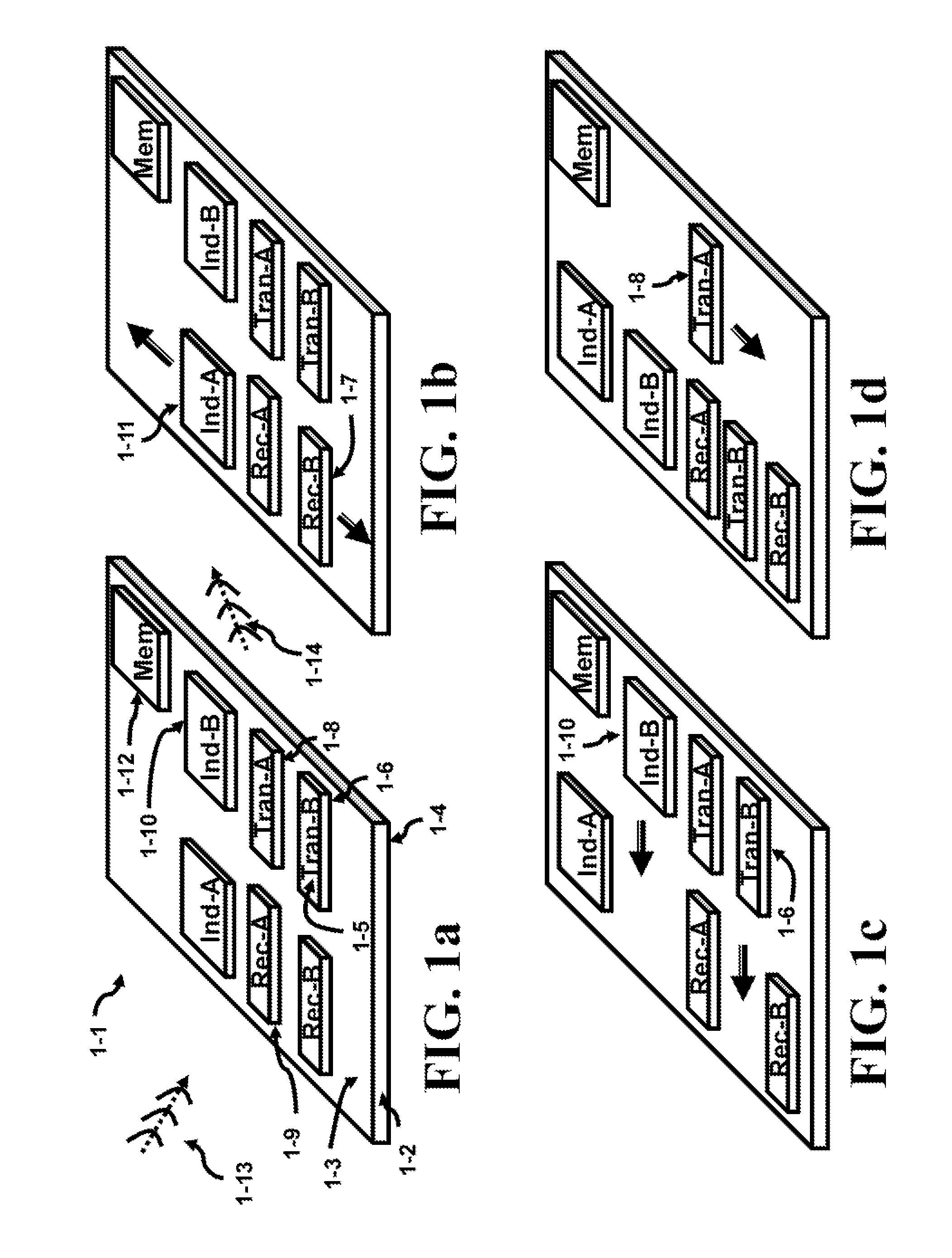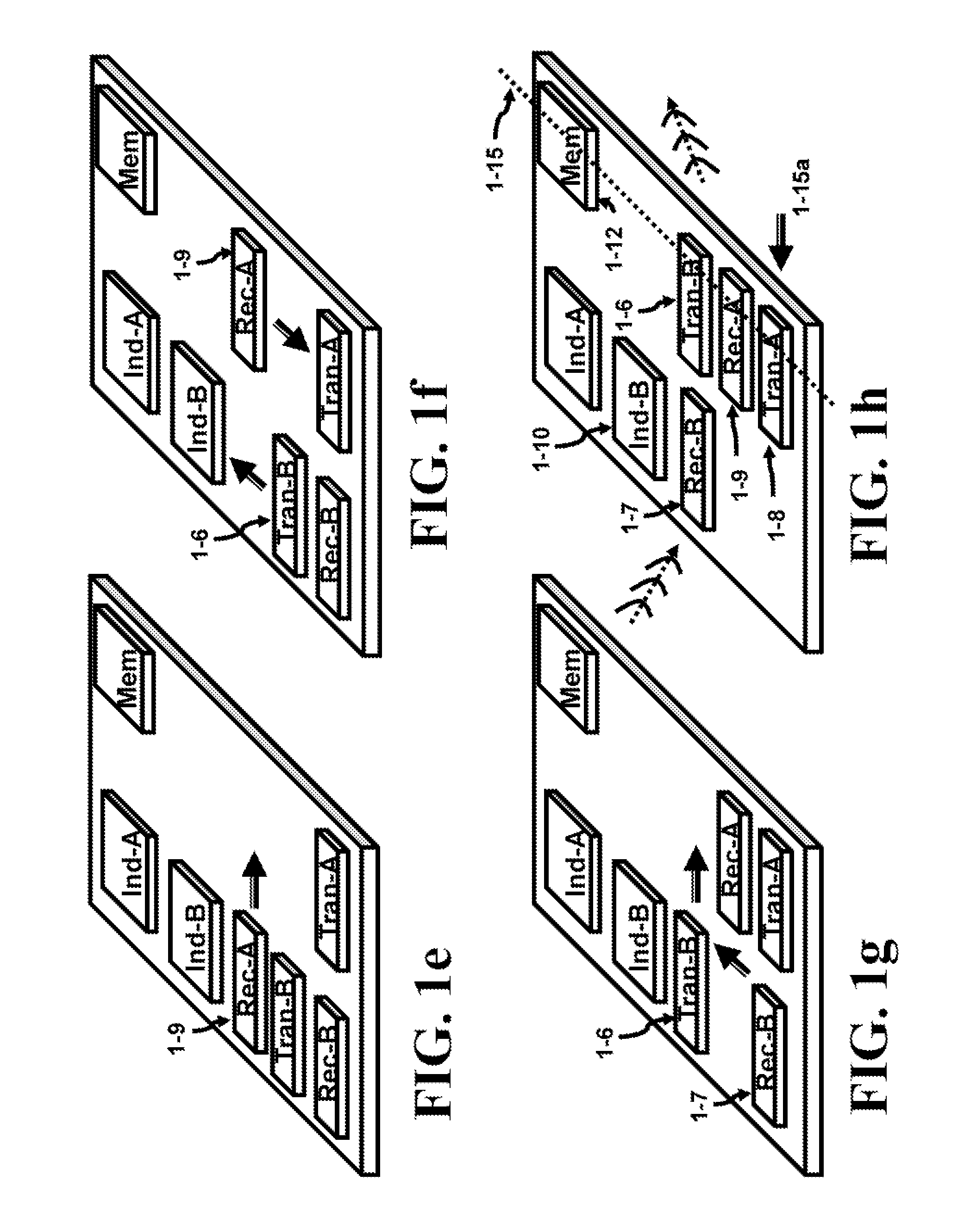Assembling Stacked Substrates That Can Form 3-D Structures
a technology of stacked substrates and substrates, applied in semiconductor lasers, laboratory glassware, instruments, etc., can solve the problems of difficult replacement of discrete elements with switches formed, unfavorable systems, and inability to do, so as to reduce power dissipation, reduce leakage current, and maximize force
- Summary
- Abstract
- Description
- Claims
- Application Information
AI Technical Summary
Benefits of technology
Problems solved by technology
Method used
Image
Examples
Embodiment Construction
[0080]Several inventions are presented and are described in this specification. All the prior art that has been cited fail to show the inventive techniques including, but not limited to: a moving component that; 1) can be detached from its surroundings; 2) can contain Coulomb islands with opposing charges: 3) can freely move by using Coulomb forces formed by Coulomb charges, and; 4) can adjust the charge of the Coulomb islands in both magnitude and polarity.
[0081]FIG. 1a shows a reconfigurable system 1-1 which uses Coulomb force to levitate and position the upper substrates on the top surface of the lower substrate. The lower substrate will be addressed as the mother substrate 1-2 while the upper ones (1-6 through 1-12) will be called the daughter substrates in several descriptions. The substrates can be a die, comprised of dice (chips), MCM (Multi Chip Modules), MEMS (Micro-Electro-Mechanical Systems), wafer bonded components or any of the previous combinations. For instance, a mem...
PUM
| Property | Measurement | Unit |
|---|---|---|
| time | aaaaa | aaaaa |
| thickness | aaaaa | aaaaa |
| displaced angle | aaaaa | aaaaa |
Abstract
Description
Claims
Application Information
 Login to View More
Login to View More - R&D
- Intellectual Property
- Life Sciences
- Materials
- Tech Scout
- Unparalleled Data Quality
- Higher Quality Content
- 60% Fewer Hallucinations
Browse by: Latest US Patents, China's latest patents, Technical Efficacy Thesaurus, Application Domain, Technology Topic, Popular Technical Reports.
© 2025 PatSnap. All rights reserved.Legal|Privacy policy|Modern Slavery Act Transparency Statement|Sitemap|About US| Contact US: help@patsnap.com



